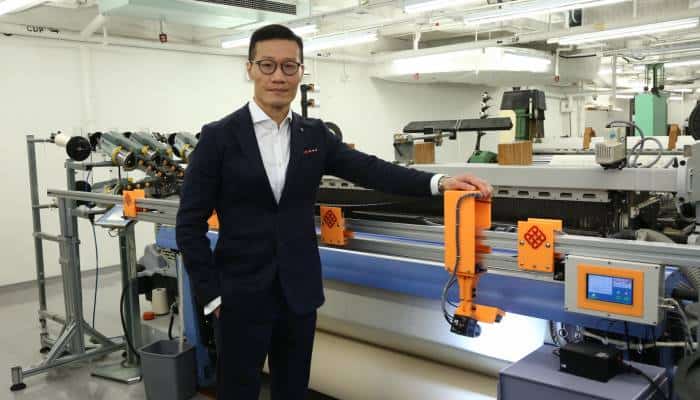The textile industry was at the heart of the Industrial Revolution, and with the introduction of the programmable Jacquard loom, was arguably the first industry to be automated (the loom was the distant ancestor of modern computers). Researchers at Hong Kong Polytechnic University (PolyU) have now applied artificial intelligence to textile manufacture, installing machine vision into looms as an intelligent fabric defect detection system.

Known as WiseEye, the system uses deep learning to detect up to 40 common fabric defects with an accuracy resolution of 0.1mm/pixel, minimising the chances of producing substandard fabric by up to 90 per cent. Currently, quality control in textile production is done by humans inspecting random lengths of fabric by eye, and fatigue and simple error mean that this is unreliable and inconsistent.
“In view of the numerous fabric structures that give great variations in fabric texture and defect types, automatic fabric defect detection has been a challenging and unaccomplished mission in the past two decades,” said research leader Prof Calvin Wong of PolyU’s Institute of textiles and clothing.
WiseEye is integrated directly into weaving machines. A high-powered LED light bar equipped with a high-resolution charge-coupled device camera is mounted on a rail, which is driven by an electric motor to monitor the fabric as it is produced by the machine. The captured images are preprocessed and fed into an AI system which has been preloaded with data from thousands of yards of fabric. The system compares the new weave with its models in real time, and generates and displays analytical statistics and alerts when needed.
“Our innovative introduction of AI, Big Data and Deep Learning technologies into 'WiseEye' not only is a technological breakthrough that meets the industry needs; but also marks a significant milestone in the quality control automation for the traditional textile industry," said Prof Wong.
During six months of tests in a real-life manufacturing environment, the system produced the 90 per cent reduction in loss and wastage compared with human inspection claimed by the team. At the moment, WiseEye can be used with most types of fabrics with different weaving structures and solid colours. The aim of Wong’s team is to train it to work on more challenging patterns, such as stripes and checks. The ultimate target is to be able to cover all common types of fabrics within five years.










McMurtry Spéirling defies gravity using fan downforce
Ground effect fans were banned from competitive motorsport from the end of the 1978 season following the introduction of Gordon Murray's Brabham...